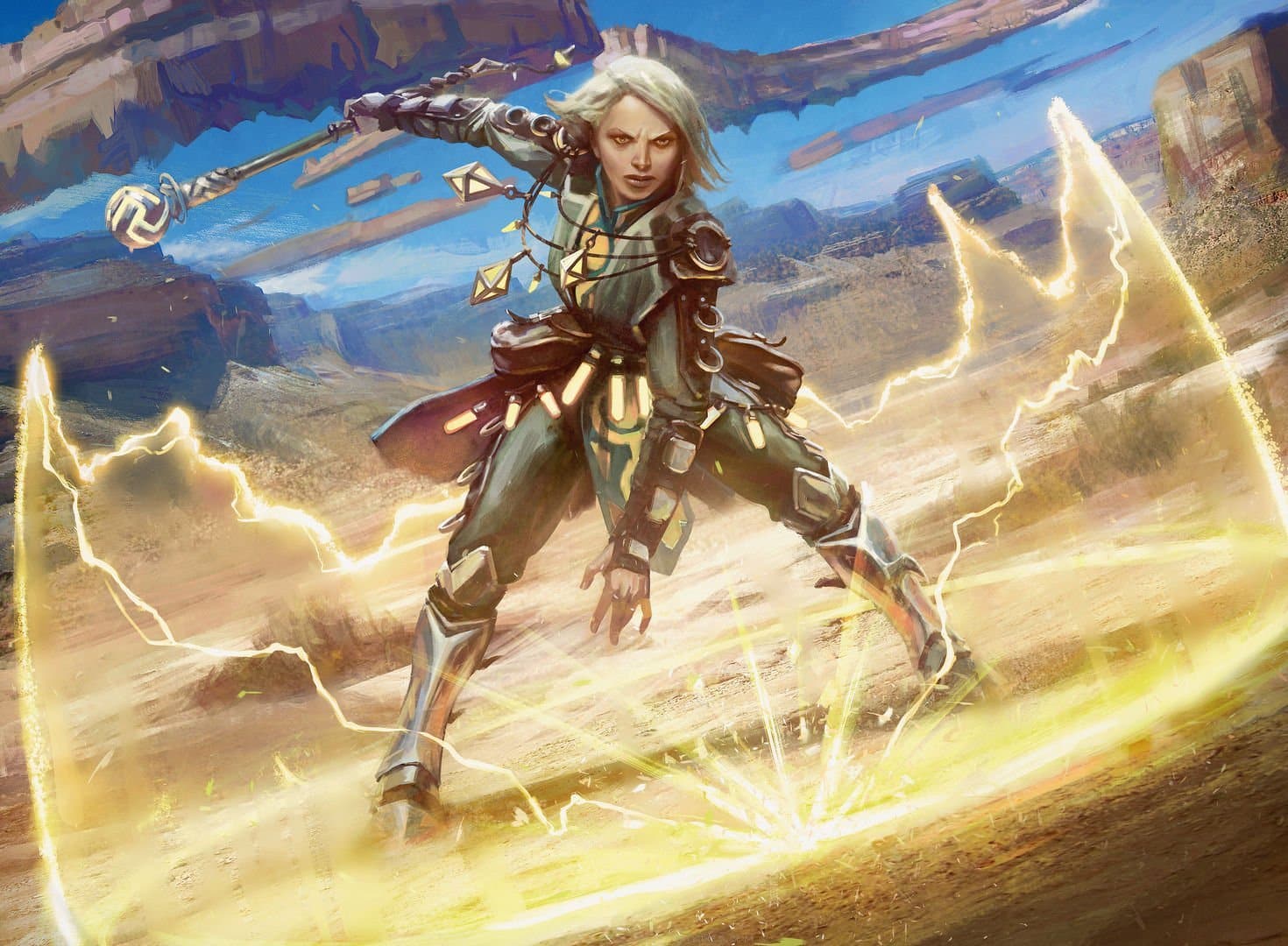Righteous Heritor 5e
Published on October 3, 2023
Harness the cosmic forces of good and become a beacon of hope in the multiverse with the Righteous Heritor feat!

Cristi Balanescu - Wizards of the Coast - Angelheart Protector
Arcane Eye may earn a small commission from affiliate links in this article.
Learn more.What Is Righteous Heritor 5e?
For those who have been influenced by a good-aligned Outer Plane, the Righteous Heritor feat is a testament to their celestial lineage. This feat allows characters to channel the benevolent energies of the cosmos, offering both a boost to their innate abilities and the power to mitigate harm.
How Does Righteous Heritor Work?
When you take this feat, you get to increase any ability score you wish by 1, you also gain the Soothe Pain feature. With this ability, if a creature within 30 feet radius sustains damage, including yourself, you can use your reaction to reduce the damage by 1d10 + your prof. bonus. You can use this a number of times equal to your prof. bonus per long rest.
Prerequisite
This feat is a 4th-level feat and requires the Scion of Outer Planes (Good Outer Plane) feat before you can pick it up. Luckily, you can get Scion of the Outer Planes for free at 1st-level by choosing the Planar Philosopher or Gate Warden background at character creation.
Is Righteous Heritor Good?
In our 5e Feats Tier List, Righteous Heritor was given a B Tier rating, making it a niche feat that can improve some builds in D&D 5e.
Righteous Heritor’s damage mitigation can be a lifesaver in dire situations, and essentially boils down to a reaction-based 1d10 + prof. bonus of healing multiple times per long rest. Also, seeing as this can be applied to yourself or allies, it’s a solid ability for both martial and support-based builds.
Which 5e Classes Make the Most of Righteous Heritor?
The color code below has been implemented to help you identify, at a glance, how good the Righteous Heritor 5e feat is for a specific class/subclass.
- Red isn’t going to contribute to the effectiveness of your character build at all
- Orange Situationally good, but a below-average option otherwise
- Green is a good option
- Blue is a great option, you should strongly consider this option for your character
- Sky Blue is an amazing option. If you do not take this option your character would not be optimized
Getting access to multiple instances of reaction-based damage mitigation is pretty universally applicable to any build. Plus, the ASIs aren’t restricted, meaning you can choose whatever your build is looking for. Ultimately, this feat’s effectiveness will boil down to if you’re specific build has a better reaction than Soothe Pain.
Artificer: At 7th-level, you get Flash of Genius, which could be able to mitigate more damage per use than Soothe Pain if you turn a failed saving throw against something like a dragon's breath weapon into a success. You'll also get more uses out of Flash of Genius per long rest.
Barbarian: Unless you're going for a Polearm Master or Sentinel build, this can offer a huge amount of damage mitigation each long rest, for both you and your allies.
Bard: If your bard is already stacked up with counterspell and silvery barbs, you likely already have a better use for your reaction than Soothe Pain. Otherwise, this is a decent way to further support your party.
Cleric: This is a solid way to effectively heal your party as a reaction.
Druid: This is a solid way to effectively heal your party as a reaction.
Fighter: Unless you're going for a Polearm Master or Sentinel build, this can offer a huge amount of damage mitigation each long rest, for both you and your allies.
Monk: The monk's Deflect Missiles and Slow Fall are both niche ways to mitigate damage, whereas Soothe Pain can be applied every combat. The reaction offered by this feat provides a huge amount of damage mitigation each long rest, for both you and your allies, which monks are all too happy to pick up.
Paladin: Beyond being very on-brand for a paladin, this can offer a huge amount of damage mitigation each long rest, for both you and your allies, as long as you're not going for a Polearm Master or Sentinel build.
Ranger: Unless you're going for a Polearm Master or Sentinel build, this can offer a huge amount of damage mitigation each long rest, for both you and your allies.
Rogue: You'll likely want to save your reaction each turn for Uncanny Dodge, so this is a skip.
Sorcerer: If your sorcerer is already stacked up with counterspell and silvery barbs, you likely already have a better use for your reaction than Soothe Pain. Otherwise, this is a decent way to support your party.
Warlock: If your warlock is using counterspell to disrupt their enemies from casting big damage spells, you likely already have a better use for your reaction than Soothe Pain. Otherwise, this is a decent way to support your party.
Wizard: If your sorcerer is already stacked up with counterspell and silvery barbs, you likely already have a better use for your reaction than Soothe Pain. Otherwise, this is a decent way to support your party.
Fill out the form below to receive Escape From Mt. Balefor for free!
Or follow us on Instagram, Twitter, and YouTube.

